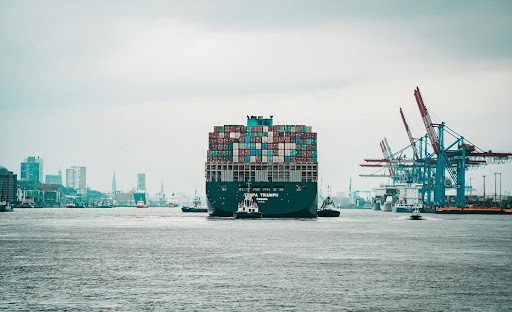Australia’s supply chains are very important for the economy. They help goods move from manufacturers to consumers. They also support trade, both local and international. However, these supply chains face some challenges. There are higher costs, delays, and other disruptions. But there are also many opportunities to improve and grow. By solving these problems, Australian businesses can work more efficiently. Let’s take a look at the issues and opportunities in today’s supply chains.
Challenges in Australian Supply Chains
1. Geographic Distance
2. Australia’s size and location make transportation tough. Being far from major global markets means shipping is costly and can take longer. Whether it’s importing products or exporting goods, the long distances create delays and raise costs. Within Australia, moving goods between cities like Sydney and Perth is also challenging, increasing transport times and expenses.
3. Labor Shortages
4. The supply chain industry struggles to find enough skilled workers. Truck drivers, warehouse staff, and logistics experts are in high demand. The shortage of workers is causing delays and higher labor costs, making it harder for businesses to keep up with demand. Training and recruitment are being focused on, but filling the gap is a slow process.
5. Disruptions and Delays
6. Natural disasters like bushfires and floods can disrupt supply chains for days or even weeks. On top of that, global issues like the COVID-19 pandemic and political tensions have made shipping and logistics even harder. When things go wrong, it affects businesses, causes delays, and leads to product shortages.
7. Increasing Costs
8. Inflation, fuel prices, and energy costs are making logistics more expensive. Tight regulations and environmental rules in Australia add to the costs for businesses. With all these rising costs, businesses have to find a way to stay competitive without passing all the extra costs onto customers.
Opportunities for Growth and Improvement
1. Using New Technology
2. Technology can help solve many of the challenges facing supply chains in Australia. Tools like artificial intelligence (AI), the Internet of Things (IoT), and blockchain are being used to improve how businesses track and manage their products. For example:
○ AI helps businesses predict demand and manage their stock more efficiently.
○ IoT devices track goods in real-time, so businesses know where their products are at all times.
○ Blockchain makes supply chains more transparent, giving businesses and customers more confidence in where products come from.
These technologies make supply chains smarter, faster, and more efficient, helping businesses save money and deliver better service.
2. Improving Infrastructure
3. Australia is investing in better roads, railways, and ports to make moving goods easier and faster. Big projects like Sydney’s WestConnex and the Inland Rail project will help reduce travel times and make transportation more reliable. These improvements will help Australian businesses move goods more quickly and reach customers faster, both locally and globally.
4. Focus on Sustainability
5. Sustainability is becoming more important in supply chains. Companies are switching to electric vehicles, using renewable energy, and adopting eco-friendly packaging. These changes help reduce costs in the long run and appeal to customers who care about the environment. By going green, businesses can improve their bottom line while helping the planet.
6. Expanding Trade in the Region
7. Australia is in a prime position to take advantage of the growing markets in the Asia-Pacific region. Trade agreements like the Comprehensive and Progressive Agreement for Trans-Pacific Partnership (CPTPP) help businesses tap into new markets. General Carrying freight can help them expand their exports and reach more customers.
How Australia Can Build Resilient Supply Chains
For Australian supply chains to succeed in the future, they need to be strong and flexible. Here’s how businesses and leaders can help make that happen:
1. Invest in Technology: Using new technology like automation or data tools can help businesses work faster and smarter, giving them an advantage.
2. Develop the Workforce: Training workers and investing in skills will ensure there are enough skilled workers to support the supply chain.
3. Build Stronger Regional Partnerships: Expanding trade with countries in the Asia-Pacific region can open up new markets for Australian businesses, helping them grow.
4. Go Green: More customers care about the environment. By using eco-friendly practices, businesses can attract more customers and stay competitive.
By focusing on these areas, Australian businesses can make their supply chains more reliable and ready for the future.
Conclusion: Turning Challenges Into Opportunities
While Australian supply chains face challenges like distance, labor shortages, and disruptions, there are plenty of opportunities to improve. By embracing new technology, investing in infrastructure, focusing on sustainability, and expanding trade, Australian businesses can strengthen their supply chains.
In the end, it’s not just about avoiding challenges but finding creative solutions. By doing this, Australian businesses can lead the way in building resilient and efficient supply chains that thrive in a changing world. The future is full of possibilities, and Australian supply chains are ready to take them on.



